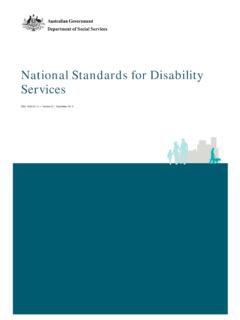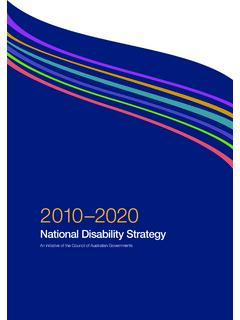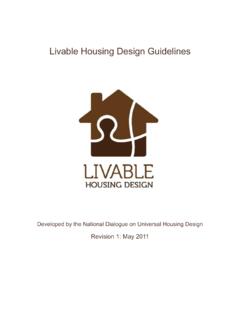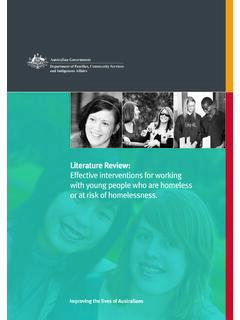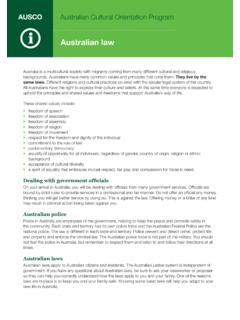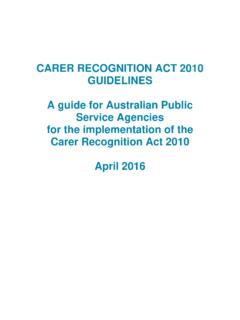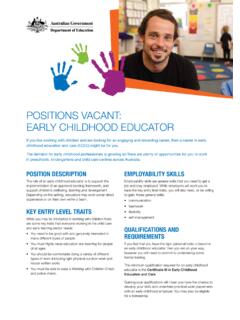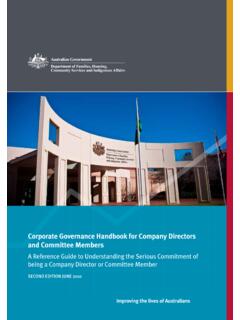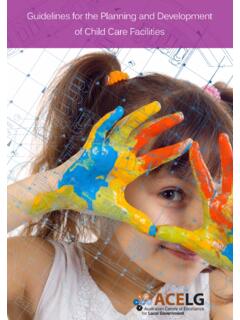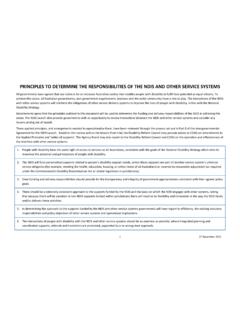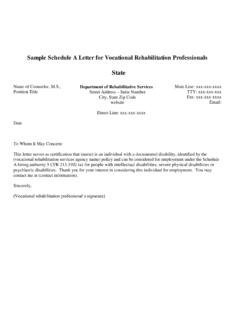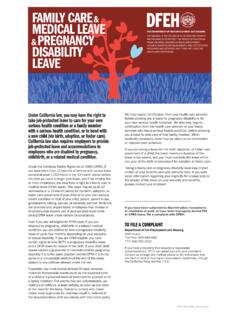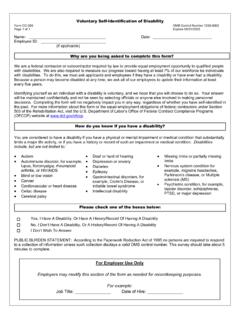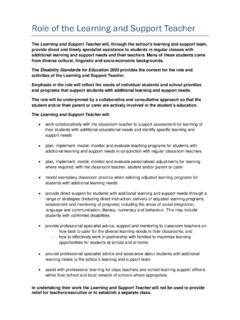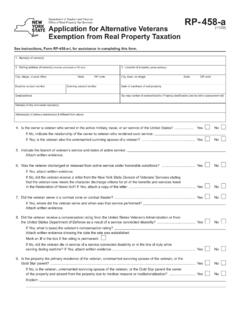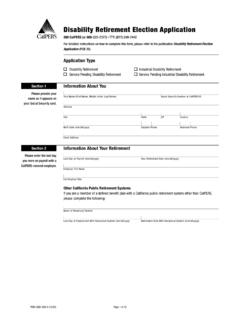Transcription of National Standards for Disability Services Easy Read Version
1 National Standards for Disability Services Easy English Version 3 How to use this bookletEasy ReadThis information is written in an easy to read way. We use pictures to explain some ideas. Some words are written in bold. We explain what these words mean. This Easy Read document is a summary of another document. You can find the other document on our website at You can ask for help to read this document. A friend, family member or support person may be able to help you. You may not want to read this whole document at once. There are 6 main sections. You may like to read these 1 at a time. 4 What s in this document?About the National Standards for Disability Services 5 What are the Standards ? 9 Standard 1: Rights 11 Standard 2: Participation and Inclusion 15 Standard 3: Individual Outcomes 18 Standard 4: Feedback and Complaints 21 Standard 5: Service Access 24 Standard 6: Service Management 28 Contact us 315 About the National Standards for Disability ServicesAround Australia, many people with Disability use a range of different Services .
2 This might be for: support with daily life getting a job, or working somewhere, like in supported employment or other workplace working with an advocate. An advocate is someone who can help you understand and speak up about a problem or other want to make sure that people with Disability get good Services . So, we use a set of rules that explain how you should be treated when you use Disability Services . These rules are called the Standards . This document explains what the Standards are, and what they mean for you. We have recently written a new Version of the Standards . The last Version was written in 1993. All the governments in Australia worked together to write these new Standards . 7We also talked to lots of different people to find out what they think should be included in the new Standards . We talked to: people with disabilities, their families and carers advocates other people who work with people with Disability .
3 We ve included many of their ideas in the new new Standards are also based on some other important ideas, such as: You should be allowed to take part in all of the decisions about your life. You should receive good quality Services . You have the right to be treated fairly, just like everyone else. 8 And they are based on the ideas in these 2 important documents: The United Nations Convention on the Rights of Persons with Disability This is an agreement about how people with Disability should be treated. It is used in many different countries around the world. The National Disability Strategy This is a document that explains how all the different governments in Australia are working together to support people with Disability . 9 What are the Standards ? There are 6 Standards . We explain them briefly here, and then we go into more detail on the following pages. Standard 1: Rights You have the right to be treated fairly when you use Disability Services .
4 Standard 2: Participation and Inclusion You can take part in the community and feel included when you use Disability Services . Standard 3: Individual Outcomes Your service supports you to make choices about what you want to do. You can work toward your goals. Standard 4: Feedback and Complaints You can tell people what you think about the Services you receive. 10 Standard 5: Service Access Finding and using Services is fair. You can access the Services you need. Standard 6: Service Management Disability Services should be managed well. National Standards for Disability ServicesYou have the right to be treated fairly when you use Disability 1: Rights12 What are my rights about Standard 1: Rights? When you use a Disability service, you have the right to: receive good Services make your own choices and have control over your life and the supports that you use be safe no one is allowed to hurt you try new things and take risks sometimes13 speak up for what s right for you get help if you need it know that your information is kept private What should my service do?
5 Your service should: treat you well and keep you safe let you make choices include your family and carers if you want them to be included 14 provide information in a way that s right for you respect your privacy let you speak up offer you support to speak up if you need it. This support might come from someone like a lawyer or advocate. Standard 2: Participation and InclusionYou can take part in the community and feel included when you use Disability Standards for Disability Services16 What are my rights about Standard 2: Participation and Inclusion? You have the right to take part in your community. You can decide when and how you do you can decide when and how you have contact with your family and friends. What should my service do? Your service should: support you to take part in the community get to know you and the things you like to do17 work with you and your family and friends if you want them to work with other organisations in the community if that s what you need understand and respect your cultural background.
6 Your service supports you to make choices about what you want to do. You can work toward your 3: Individual OutcomesNational Standards for Disability Services19 What are my rights about Standard 3: Individual Outcomes?You have the right to make choices about what you want to do. The Services you use should let you make your own decisions about: what you want to do how you will reach your goals. What should my service do? Your service should: let you make choices help you make goals and support you to reach them notice the things you are good at20 let you seek support from other people such as your family, friends, or an advocate if you want to work with other Services if that s what is needed to reach your goals respect everything about you when you are making choices and decisions, including: your age whether you are a man or woman your cultural background, religion or faith your sexuality whether or not you are married.
7 Standard 4: Feedback and ComplaintsYou can tell people what you think about the Services you Standards for Disability Services22 What are my rights about Standard 4: Feedback and Complaints?You have the right to tell people what you think about the Services you receive. Your feedback can be good or bad. You can tell someone if there is a you can get support to do this. You have the right to seek advice from someone like a support person, lawyer or an problem should be fixed. And you should not be made to feel bad because you said that something is wrong with the service you use. 23 What should my service do? Your service should: offer different ways for people to have a say listen to the things that people tell them be prepared to change the way they work if there is a problem work with your family, carer, support person or advocate if that s right for you always work hard to make sure their Services are good.
8 Standard 5:Service AccessFinding and using Services is fair. You can access the servicesyou Standards for Disability Services25 What are my rights about Standard 5: Service Access?You have the right to be able to find and use Disability Services . Everyone should be allowed to ask if they can use a service. If you can t use a service, the reasons why should be explained clearly to you. And the service should put you in touch with another organisation who may be able to help you. This is called a referral. 26 What should my service do? Your service should: have a good way of working with people who make enquiries ask people what they think about the service and make improvements based on these ideas provide information in different ways this will suit a range of communication needs explain who can use the service, how to join and how to leave explain if you need to wait before you can use the service 27 offer other options if you can t use their service this might include a referral to another service if you can t use their service, they should explain why.
9 Standard 6: Service ManagementDisability Services should be managed Standards for Disability Services29 What are my rights about Standard 6: Service Management?You have the right to use a service that is managed well. Good management includes things like: having good staff making sure there are no problems, or fixing problems if they happen having good processes and ways of working communicating well. 30 What should my service do? Your service should: have staff who are well trained and who are good at their jobs obey all the laws that apply have good processes in place to manage finances, staff and safety learn from the feedback they receive and make improvements ask other people, including people with Disability , families and carers, advocates and others, if the service is working well. 31 Contact Us1300 653 227 PO Box 7576 Canberra Business Centre ACT Easy ReadThis Easy English document was created by the Information Access Group using PhotoSymbols, stock photography and custom images.
10 The images may not be reused without permission. For any enquiries about the images, please visit or phone (03) 9585
